Why Did the Red Tails Sit and Wait?
..and why were there so many of them?
Red-tailed Hawks are perhaps the most iconic raptor in America. They are the most common large hawk in North America. They are generalists and can live in a wide variety of habitats including urban areas. Additionally, they are also generalists with what they eat which allows them to survive in so many different habitats. On an early morning visit to farmland in Marana, I came across a number of Red-tailed Hawks.
The early morning light cast a nice glow to the hawks. Tucson and Southern Arizona have resident Red-tailed Hawks year-round. In the winter, those numbers increase thanks to a large number of Red-tails that fly south looking for better food resources. That’s why I was seeing so many Red-tailed Hawks on this farm that morning.
The range map at AllAboutBirds shows Red-tailed Hawks present throughout the United States year-round. The breeding territory for Red-tails in North America extends their range from some northern states up into Canada and those birds, along with many other Northern US birds, migrate south for the winter.
All of the Hawks I saw that morning were “sticky”, meaning they never flew off. It was a cool morning and the birds were likely waiting for the air to heat up to create thermals which would make it easy for the birds to soar. Some of today’s photos may include different shots of the same bird but all of the photos are of the birds sitting and waiting for better air.
Natural perches are always more photogenic but we humans have created many other perch locations for birds. Raptors like to have a spot well above the landscape which will give them a wide view of possible prey around them. The center-pivot-irrigation system doesn’t look pretty but it serves the Hawk’s purpose well. The Red-tail and the Finch were certainly aware of each other and the size comparison was startling.
As I drove along the irrigation structure, that Red-tail would take off whenever I got close. Rather than flying away, it just flew ahead of me for about 25 yards and then landed on the irrigation system again. It did this hop-scotch action a few times before it reached the end of the structure when it finally flew away to find another perch. With the sun at my back and the bird facing the sun, the nictitating membrane of its eye reflected the sunlight. Those are real aviator sunglasses.
Red-tailed Hawks are stocky birds with short tails. Although they look very large, they may weigh anywhere from less than two pounds up to four pounds (for a very large female).
Hawks and other raptors may tuck one leg up under their feathers while perched. That generally is an indicator of a very relaxed bird. Additionally, in the winter they may do this to limit heat loss from their unfeathered leg. This helps to keep the leg warm. From this bird’s posture, it looks as if it is contemplating its navel. More likely, it is checking out possible prey on the ground directly underneath it!
There were many other Red-tailed Hawks that I didn’t photograph that morning and they will be with us all winter. As you drive around this winter, you may see these birds on tall power poles or tall trees or soaring overhead in lazy circles.
One of my favorite fun facts about Red-tailed Hawks is that their call, a raspy scream, is the sound used on TV and in the movies for just about any raptor. Hollywood directors seem to think that the sound of any raptor or large bird is best depicted by that of a Red-tailed Hawk. Listen to the first calls on AllAboutBirds and see if you recognize this call.



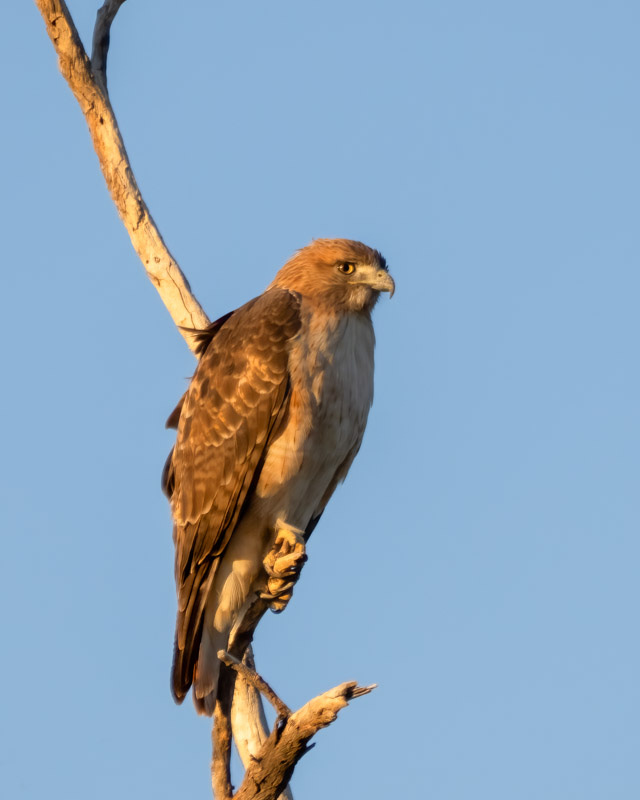
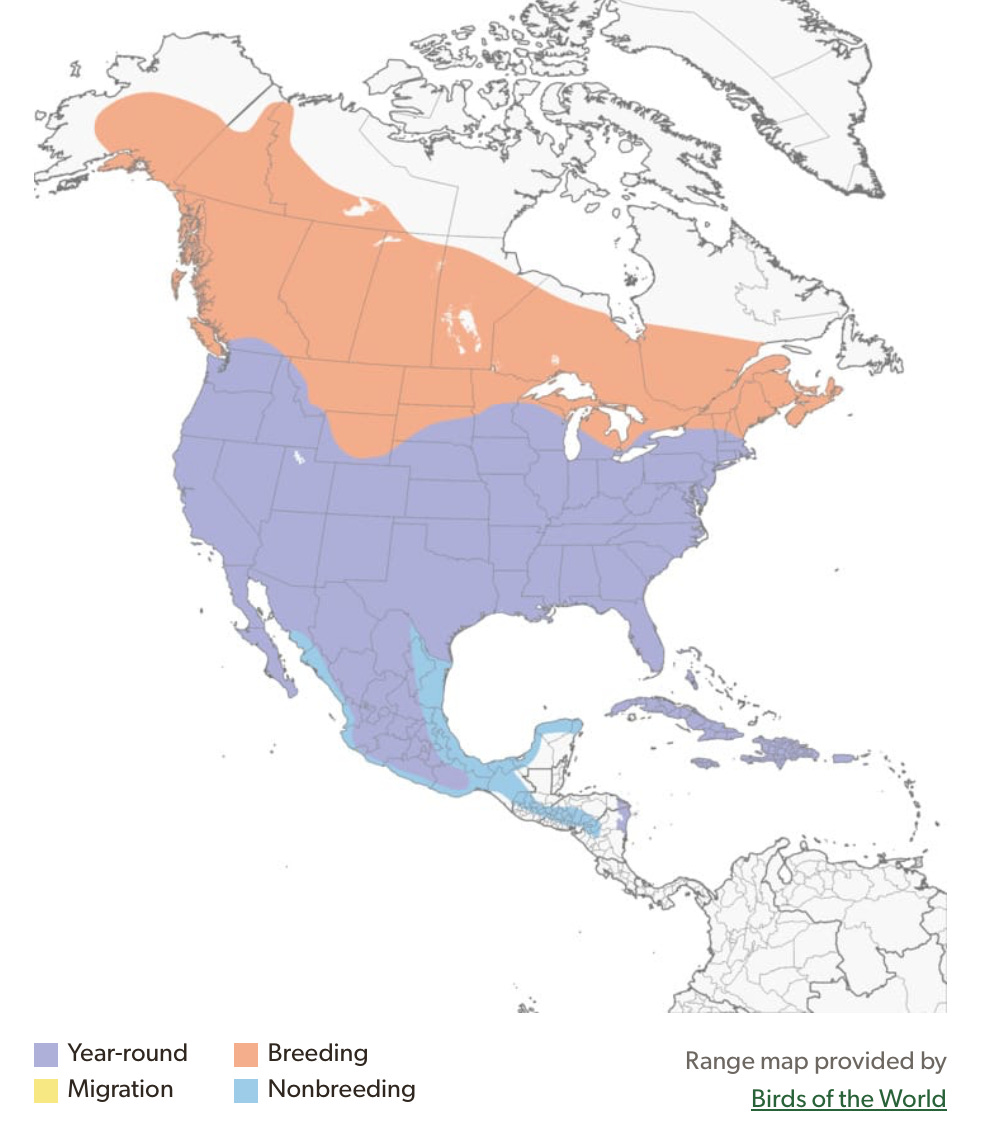

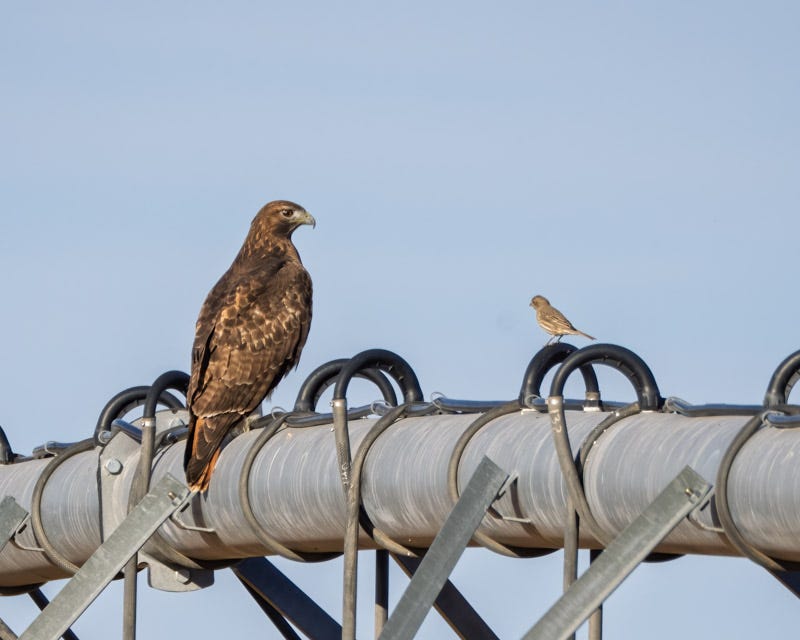
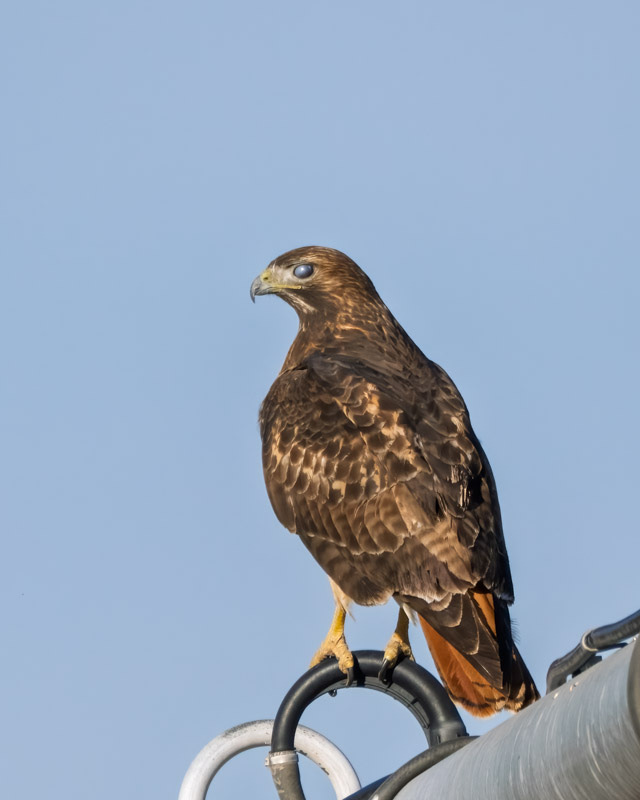

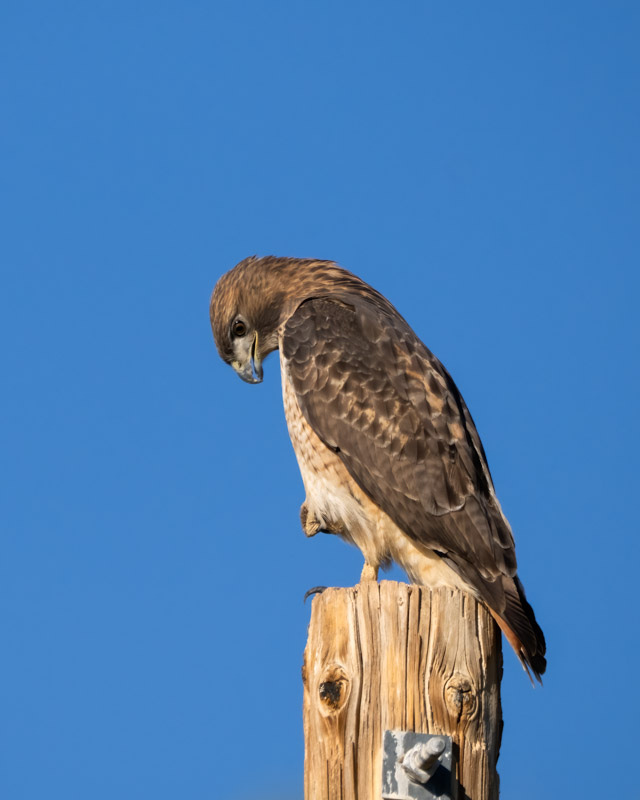
I love the photo of the hawk and the finch!
Very nice series and comments.